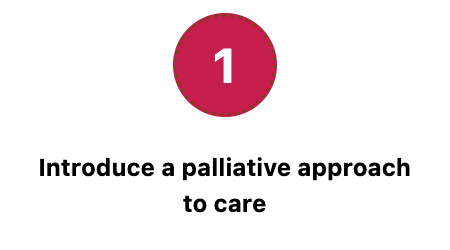
Welcome to SPA-LTC. This page helps you find the resources that are relevant to you. You can
access this help by clicking on the question mark at any time.
Filters
Use the filters to tell us your language preference and the region in which you live. We are
expanding our services to meet needs in both French and English in as many locations across
Canada as possible, but some combinations may not have resources available.

Interactive Guide
The interactive visual guide depicts the journey through the palliative approach to long-term
care, It represents the chronological progression from transitioning a patient to long-term
care, through living with advancing illness, to the patient's end of life and the
bereavement of the family. Each of the elements in the model relate to facets of care -
preparing for future changes, improving comfort and quality of life, and building caring
relationships - and to the actions that can be taken by organizations, patients, and family
members. Click on any of the elements in the visual guide to see the actions that relate to
them.

Actions
Select one of the numbered action topics to be presented with resources related to that
action.

Building Organizational Capacity
Scroll down and you will find an alternate set of filters focused on helping you build
organizational capacity. These are an alternate way to access some of the resources
available, and are intended primarily for members of organizations. When you click on these
filters, it will replace any action selected and the resources will show in the resource
area.

Resources
The resources relevant to your selection will show in the middle of the page. Click on any of
the resources to access them.